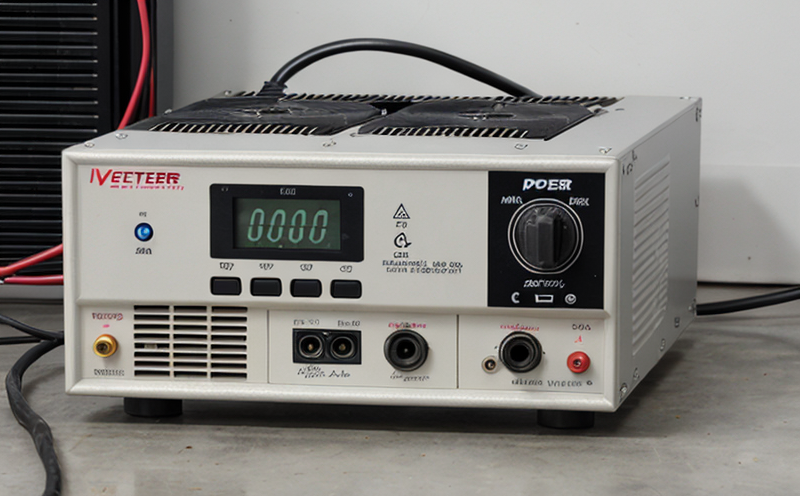IEC 61683 Efficiency Testing of PV Inverters
The International Electrotechnical Commission (IEC) Standard IEC 61683 provides a framework for the efficiency testing of photovoltaic (PV) inverters. This standard is critical in ensuring that the power conversion devices used in solar energy systems operate efficiently, reliably, and meet regulatory requirements.
The PV inverter converts direct current (DC) from the solar panels into alternating current (AC), which can then be fed into the grid or used directly for household consumption. The efficiency of a PV inverter is crucial as it determines how much usable energy is derived from the captured sunlight, thereby affecting both the economic and environmental performance of the photovoltaic system.
IEC 61683 defines specific test procedures that allow manufacturers to measure the efficiency of inverters under various conditions. These tests are designed to simulate real-world operating scenarios, including maximum power point tracking (MPPT) and varying input voltage ranges. The standard is widely accepted in the global photovoltaic industry as it ensures comparability of performance data across different devices.
The testing process involves several key steps: initial calibration of test equipment, setup of the PV simulator to mimic real solar panel conditions, application of controlled AC load, and recording of energy input and output. The efficiency is calculated based on these parameters using the formula:
\[ \text{Efficiency} = \frac{\text{Output Power (W)}}{\text{Input Power (W)}} \]The standard also specifies acceptance criteria for different types of inverters, including string inverters, power optimizers, and micro-inverters. Compliance with these standards is essential not only to ensure product quality but also to facilitate market access by satisfying regulatory requirements.
Understanding the context within which this testing takes place helps in appreciating its significance. PV inverters are part of a broader energy sector that contributes significantly to renewable energy adoption worldwide. By adhering to IEC 61683, manufacturers can enhance their products' performance and reliability, contributing to sustainable development goals.
For R&D engineers and quality managers, it is important to consider the real-world implications of these tests. For instance, ensuring that the inverter operates efficiently at different ambient temperatures and under varying irradiance levels can extend its lifespan and optimize energy production. Compliance with IEC 61683 also ensures that inverters meet international standards, opening up markets for global trade.
| Test Parameter | Description |
|---|---|
| Input Voltage Range | The range of DC input voltage over which the inverter must maintain its specified efficiency levels. |
| Output Power | The maximum AC power output from the inverter under standard test conditions. |
| Efficiency Measurement | The ratio of AC output power to DC input power at the point of maximum power transfer. |
| Harmonic Distortion | The level of harmonic distortion present in the AC output, which can affect grid stability and other connected devices. |
In conclusion, IEC 61683 efficiency testing is a cornerstone for ensuring that PV inverters perform optimally under various conditions. This testing not only enhances product quality but also contributes to the broader goals of renewable energy adoption and sustainability.
Industry Applications
- Solar power plants requiring high reliability and efficiency.
- Rooftop solar systems where every watt counts for maximum return on investment.
- Off-grid installations needing consistent and reliable power supply.
- Utility-scale projects aiming to maximize energy output and minimize costs.
The application of IEC 61683 efficiency testing is not limited to residential or small commercial settings. It extends to large-scale utility projects where the performance of inverters plays a crucial role in meeting renewable energy targets and reducing carbon footprints.
By ensuring that PV inverters meet stringent efficiency standards, this testing supports the growth of solar energy as a viable alternative to fossil fuels. It enables stakeholders in the photovoltaic industry to make informed decisions about product selection, thereby promoting innovation and market competitiveness.





